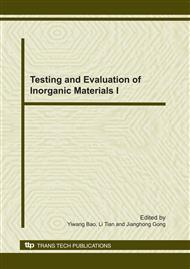p.86
p.89
p.92
p.96
p.100
p.105
p.109
p.114
p.118
Methods for Determining the Interface Strength and Residual Stress of Laminated Ceramics
Abstract:
Glass/ zirconia laminated material is the most commonly used material in the field of dental restoration, although the biocompatibility of such material has been subject to lots of research and the mechanical compatibility and durability have not been deeply researched. This paper, by the research on the contact stress of static and dynamic surfaces of the ceramic material, reveals the physical meaning of damage and fatigue at the interface of material; through contacting with the sphere indentation test and by the investigation of fatigue and damage of the surface and interface of such material in the corresponding time scale as well as by the use of acoustic emission monitoring for detecting the damage process and crack propagation process within the detection layer and the laminated ceramic surface, the time of occurrence and corresponding load can be obtained, which plays an importantly practical role in resolving the forecasting of the changes in material damage and the analysis of fatigue.
Info:
Periodical:
Pages:
100-104
Citation:
Online since:
December 2010
Authors:
Keywords:
Price:
Сopyright:
© 2011 Trans Tech Publications Ltd. All Rights Reserved
Share:
Citation:


